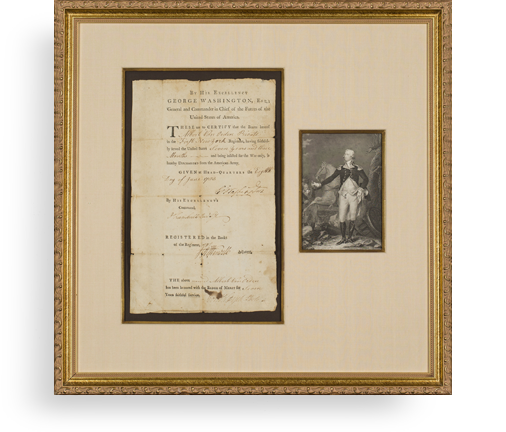Autographs of Queen Elizabeth I, Charles I, and James II, From the Album of a Three-Time British Prime Minister Under Victoria



Elizabeth I's 45-year reign is generally considered one of the most glorious in English history. It saw many brave voyages of discovery, including those of Francis Drake, Walter Raleigh and Humphrey Gilbert, particularly to the Americas. These expeditions launched England into an age of colonization, naval dominance and trade expansion, which Elizabeth...
Elizabeth I's 45-year reign is generally considered one of the most glorious in English history. It saw many brave voyages of discovery, including those of Francis Drake, Walter Raleigh and Humphrey Gilbert, particularly to the Americas. These expeditions launched England into an age of colonization, naval dominance and trade expansion, which Elizabeth herself recognised by establishing the East India Company in 1600. Many great country houses were built, such as Longleat, Kentwell and Hardwick Hall. The arts flourished during Elizabeth's reign. Miniature painting reached its high point, but more famously, literature and theaters thrived. William Shakespeare illuminated the era, and the Queen herself attended the first performance of 'A Midsummer Night's Dream'. Ben Jonson and Christopher Marlowe were also active then. Composers such as William Byrd and Thomas Tallis worked in Elizabeth's court and at the Chapel Royal of St. James's Palace. The image of Elizabeth's reign is one of triumph and success. The Queen herself was often called 'Gloriana', 'Good Queen Bess' and 'The Virgin Queen'.
James II was King of England and Ireland as James II, and King of Scotland as James VII, from 1685 until he was deposed in the Glorious Revolution of 1688. He was the last Roman Catholic monarch to reign over the Kingdoms of England, Scotland and Ireland. His attempts to force the Church of Scotland to adopt high Anglican practices led to the Bishops' Wars, strengthened the position of the English and Scottish parliaments and helping precipitate his downfall.
From 1642, Charles I fought the armies of the English and Scottish parliaments in the English Civil War. After his defeat in 1645, he surrendered to a Scottish force that eventually handed him over to the English Parliament. Charles refused to accept his captors' demands for a constitutional monarchy, and temporarily escaped captivity in November 1647. Re-imprisoned on the Isle of Wight, Charles forged an alliance with Scotland, but by the end of 1648 Oliver Cromwell's New Model Army had consolidated its control over England. Charles was tried, convicted, and executed for high treason in January 1649. The monarchy was abolished and a republic called the Commonwealth of England was declared.
Edward Stanley, Earl of Derby, led the British Conservative Party from 1846-1868, and was Prime Minister three times, serving in that position in 1852, 1858-59, and from 1866-8. This placed him in the company of men like Benjamin Disraeli and Lord Palmerston. Stanley's ancestors were Kings of Man from 1405 and later Lords of Man. Thomas Stanley, First Earl of Derby, famously switched sides at the Battle of Bosworth and placed the crown of the fallen King Richard III upon the head of Henry Tudor, thus starting the Tudor Dynasty that produces Henry VIII and Elizabeth I.
Lord Stanley had a sense of the history of the country he led and so sought out signatures that interested him. Autographs from the Earl of Derby's album, with signatures of Elizabeth I, Charles I and James II. Also included is the seal of James I, who succeeded Elizabeth I, which he used on his correspondence.
Autographs of Elizabeth I have become very scarce, just a handful having reached the market in the past several years.

Frame, Display, Preserve
Each frame is custom constructed, using only proper museum archival materials. This includes:The finest frames, tailored to match the document you have chosen. These can period style, antiqued, gilded, wood, etc. Fabric mats, including silk and satin, as well as museum mat board with hand painted bevels. Attachment of the document to the matting to ensure its protection. This "hinging" is done according to archival standards. Protective "glass," or Tru Vue Optium Acrylic glazing, which is shatter resistant, 99% UV protective, and anti-reflective. You benefit from our decades of experience in designing and creating beautiful, compelling, and protective framed historical documents.
Learn more about our Framing Services









































































































